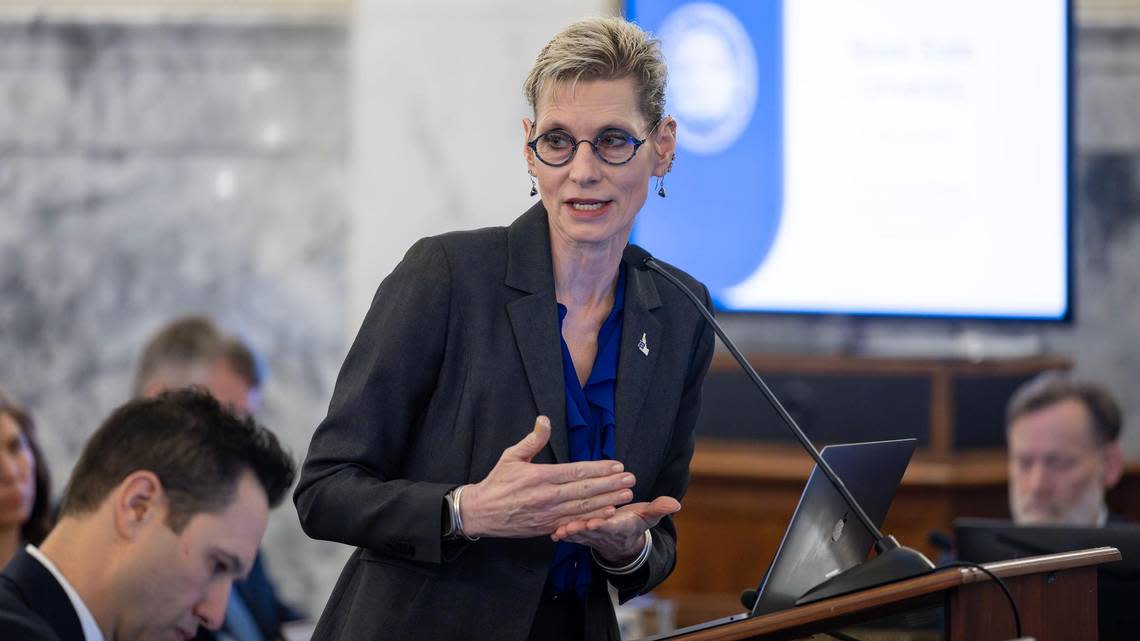Expect more tuition hikes at Idaho universities. Will it keep up with inflation?
In our Reality Check stories, Idaho Statesman journalists seek to hold the powerful accountable and find answers to critical questions in our community. Read more. Story idea? Tips@idahostatesman.com.
Students at Idaho’s four-year universities will have to pay more for tuition again next year, but even with the incremental increase, the institutions could still struggle to keep up with inflation and rising costs.
This is the second year in a row the State Board of Education has approved an increase in undergraduate resident tuition and fees for Idaho’s public four-year universities after pausing tuition increases for three years during the pandemic.
Over the past decade, the average cost to attend one of Idaho’s four-year institutions increased by 25%, but at the same time, the average cost to provide a college education has spiked by 36%, according to board documents. The percentage of the total general fund dollars that have gone to public universities has also continued to drop over the past two decades.
Idaho ranks among the top states for having low in-state tuition at four-year universities, according to a report from The College Board.
Board of Education members said they had to balance the need to keep colleges affordable and accessible for Idaho residents, while also ensuring universities can continue to operate and provide quality education. That could be a “tricky balancing act” over the next several years, board member Kurt Liebich said during the meeting.
According to documents provided by the board, universities were directed not to include requests for more than 3% tuition hikes, which was the amount approved by the State Board. The increases this year represent around a $250 bump per year for students at each university.
Inflation is higher than 3% this year, and the increase in tuition doesn’t cover the actual cost of educating students, Liebich said. In the past five years, he added, ”this board has made a decision where we’ve said, ‘Provide the education to students that they deserve and do it more efficiently.’”
Employee costs, inflation raise costs of college
Representatives from Idaho’s four-year institutions said their requests for tuition increases were in large part because of employee costs and other increasing expenses. The money universities receive from the state doesn’t cover all costs for their employees, so the institutions need to make up for that gap in funding to cover the changes to employee compensation.
“Inflation has significantly impacted all areas of the university, including salaries,” Boise State University said in its tuition-and-fee request. “Historically Boise State relied on the low cost of living in the area to offset lower-than-average salaries, but that is no longer the case.”
The university said the cost of living and salaries have led to high turnover as employees are offered higher paying jobs, so Boise State has had to raise salaries to attract and retain faculty and staff. The turnover rate in the 2022-2023 school year was about 8% for faculty. More than one-third of classified staff left the same year.
Boise State expects to have a gap of about $6.6 million this year to cover its portion of employee compensation changes, health care cost increases and inflation. Even with the tuition increase, it will still have a deficit, but university officials said they would find other ways to cover the gap.
Boise State President Marlene Tromp said during the board meeting the university is looking at different strategies to become more efficient and will make cuts if necessary.

Other universities said that if the funding gaps aren’t addressed, it could negatively impact students and impede progress on other programs.
Tuition increase on par with average
From 2013 to 2023, the board approved, on average, 2.9% tuition increases per year. That includes the three years tuition remained stable during the COVID-19 pandemic, though in 2023, universities requested increases to the consolidated mandatory student fees, which go toward student services and maintenance.
In 2019 State Superintendent Debbie Critchfield, who was the president of the Board of Education at the time, said the university presidents had worked with the board to avoid increasing tuition costs for the 2020-2021 school year. But she said it would result in “serious budget strains on all of our campuses,” according to a news release.
Last year, the board approved around 5% increases for Idaho’s four-year universities. The institutions have attributed tuition hikes largely to inflation and employee compensation.
Board of Education spokesperson Mike Keckler said increasing tuition is one of the hardest decisions board members make.
“They want to do everything they can to keep college as affordable as possible,” he told the Idaho Statesman. “And when the price goes up, you’re always risking making it too expensive for many Idahoans.”
Liebich said he’s concerned about what could happen in years to come.
“At some point, you just reach this rate of diminishing returns where there isn’t any juice left in the orange,” Liebich said.
